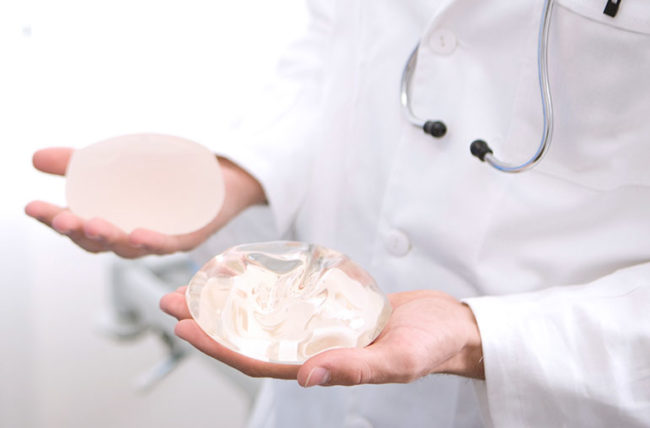Understanding Implant Revision Surgery
Definition and Objectives
Breast implant revision surgery involves a plastic surgeon replacing or modifying existing implants to achieve the desired result and goal. The primary goals of breast augmentation revision procedures are to improve appearance, address complications, or update to new breast implants. It can correct issues like ruptures, capsular contracture, or dissatisfaction with previous implants through breast revision surgery or breast augmentation revision, aiming to achieve the goal.
Differences from Initial Augmentation
Initial breast augmentation focuses on enhancing breast size and shape through implant surgery. Implant revision procedures are more complex. They often involve correcting problems from the initial surgery. Surgeons must deal with scar tissue, previous implants, and other challenges in breast revision surgery.
Complexity of Procedures
Revision surgeries are highly customized. Each patient’s needs are unique. Surgeons must plan carefully to achieve the best results. Techniques vary based on the issue being addressed. For example, textured implant removal of old breast implants may be necessary due to the Allergan Biocell device withdrawal information, leading to breast revision surgery.
Customized Approach
Surgeons tailor each procedure to the individual. They consider factors like skin quality, implant position, patient goals, breast implants, and breast revision surgery. This personalized approach increases the chances of a successful outcome in implant surgery, breast implants, new breast implant, and implant revision surgery. It also minimizes risks and complications.
Technical Details
Implant revision techniques differ from initial surgeries. Surgeons may need to remove scar tissue or reposition implants during breast revision. They might also use different types of implants than those used initially. This requires precise skill and experience.
Reasons for Breast Revision
Changing Size
Many breast revision patients seek surgery to change their implant size. Personal preferences often evolve over time. Some women may want larger implants, while others prefer smaller ones. Lifestyle changes can also influence this decision. For example, athletes might choose smaller implants for comfort during physical activities.
Complications
Complications are a common reason for breast revision surgeries. Capsular contracture is one such issue. This occurs when scar tissue forms around the breast implants, causing it to harden. It can be painful and distort the breast’s appearance. Another complication is implant rupture. Saline implants deflate when they rupture, while silicone implants may not show immediate signs. Migration of implants is another concern. Implants may shift from their original position, leading to an uneven look.
Switching Implant Types
e women opt for breast revision surgery to switch implant types. They might move from saline to silicone implants or vice versa. Silicone implants often feel more natural and are less likely to ripple. This switch can lead to improved satisfaction with the results of implant revision surgery, breast implants, and breast implant safety.
Corrective Surgery
Corrective breast augmentation addresses unsatisfactory outcomes from previous surgeries. Some patients are unhappy with their initial breast augmentation results and consider implant revision surgery. Revisionary breast augmentation can plan to correct asymmetry or other aesthetic issues. Many breast revision specialists focus on these complex cases.
Reconstructive Needs
Breast reconstruction patients sometimes need revision surgeries. These procedures can plan and refine the results of reconstructive breast surgery. Revision breast surgery may involve adjusting the shape or position of the reconstructed breast as part of the plan.
Overview of Revision Costs
Cost Range
Breast implant revision surgery can be expensive. The cost ranges from $3,000 to $12,000. This depends on various factors. Often, it is more costly than the initial augmentation.
Higher Than Initial Surgery
Revision surgery tends to be pricier. Surgeons need to correct complications or make adjustments. This requires more skill and time. Patients should prepare for higher expenses.
Surgeon Fees
Surgeon fees are a significant part of the cost. Experienced surgeons may charge more. Their expertise ensures better results. Always check the surgeon’s qualifications.
Facility Costs
Facility costs also affect the total price. Accredited surgical centers or hospitals may charge higher fees. These facilities provide better safety and care standards.
Type of Implants
The type of implants used can influence costs. Silicone implants are usually more expensive than saline ones. Some patients may need custom implants, which add to the expense.
Additional Factors
Other factors include anesthesia fees and post-surgery care. Anesthesia can add several hundred dollars to the bill. Post-surgery care, such as follow-up visits for breast implant, also contributes to the cost.
Insurance Coverage
Insurance rarely covers cosmetic procedures. However, if the revision of a breast implant is medically necessary, insurance might help. Always check with your provider first.
Factors Affecting Surgery Price
Surgeon’s Expertise
A surgeon’s expertise significantly impacts the cost of breast implant revision. Highly experienced surgeons often charge more. They have specialized skills in implant revision surgery and a track record of successful breast implant surgeries. Patients may pay higher fees for their expertise.
Board-certified surgeons usually demand higher fees. Certification ensures they meet strict standards. Patients feel safer knowing their surgeon is well-qualified.

Geographic Location
Geographic location also affects surgery prices. Urban areas with high living costs tend to have higher breast implant surgery fees. Surgeons in cities like New York or Los Angeles charge more for breast implant or implant revision surgery compared to those in smaller towns.
Travel expenses might add to the overall cost. Patients sometimes travel to different states for better surgeons for breast implants, increasing their total expenses.
Surgical Complexity
The complexity of the breast implant surgery plays a major role in pricing. Simple revisions are less expensive. More complex procedures, like breast implant surgeries, take longer and require more resources, raising the price.
For example, correcting a minor asymmetry in a breast implant costs less than fixing severe capsular contracture. The latter involves removing scar tissue and possibly replacing implants, making it more costly.
Additional Expenses
Additional expenses can arise from treating complications or combining procedures, such as a breast implant. Complications like infections or hematomas from a breast implant need extra treatment, adding to the final bill.
Combining procedures can also increase costs. Some patients opt for a breast lift along with implant revision. This combination requires more time and resources, resulting in higher fees.
Additional costs may include:
-
Anesthesia fees
-
Facility charges
-
Post-surgery garments
-
Follow-up visits
Dealing with Common Issues
Capsular Contracture
Capsular contracture occurs when scar tissue tightens around the implant. This can cause discomfort and change the appearance of the breast.
To manage this, doctors may recommend several strategies:
-
Massage: Regularly massaging the breast can help prevent scar tissue from hardening as part of a plan.
-
Medication: Anti-inflammatory drugs may reduce swelling and pain.
-
Surgery: In severe cases, surgery may be necessary to remove or replace the implant.
Implant Rupture
Implant rupture is another common issue. This happens when the outer shell of the implant breaks.
There are two types of ruptures:
-
Saline Rupture: The saline solution from the breast implant leaks out quickly and is absorbed by the body.
-
Silicone Rupture: Silicone gel leaks slowly and may stay in the surrounding tissue, plan accordingly.
For saline ruptures, symptoms include a sudden decrease in breast size and should be part of your plan. For silicone ruptures, there might be no immediate symptoms. Doctors use MRI scans to detect silicone ruptures.
Treatment options include:
-
Removal: The broken implant is taken out.
-
Replacement: A new implant replaces the old one during the same surgery.
Implant Migration
Implant migration occurs when an implant shifts from its original position. This can lead to uneven breasts or discomfort.
Causes include:
-
Gravity: Over time, gravity can pull implants downward.
-
Physical Activity: High-impact activities can cause implants to shift.
-
Poor Placement: Incorrect placement during surgery without a proper plan can lead to migration.
utions involve:
-
Supportive Garments: Wearing supportive bras can help keep implants in place.
-
Surgery: Revision surgery might be needed to reposition the implant.
Aesthetic Dissatisfaction
etimes patients are unhappy with their initial augmentation results. They might want a different size, shape, or position.
Steps for making decisions about revisions include:
-
Consultation: Speak with your surgeon about your concerns.
-
Realistic Expectations: Understand what changes are possible and realistic.
-
Cost Considerations: Factor in additional costs for revision surgery.
Choosing Implant Type or Size
Silicone vs. Saline
Selecting between silicone and saline implants depends on personal goals and medical advice. Silicone implants feel more like natural breast tissue. They are filled with silicone gel, which many find to be more realistic. Saline implants are filled with sterile salt water. They can be adjusted during surgery for a precise fit as per the plan.
Silicone implants often require larger incisions due to their pre-filled nature. Saline implants can be inserted empty and filled once in place, leading to smaller scars. Both types have their pros and cons, so it’s crucial to plan and discuss options thoroughly with your surgeon.
Changing Size
Altering the size of breast implants is another key consideration. Some may want larger implants for a more dramatic look. Others might prefer smaller implants for a natural appearance. Changing implant size can significantly impact the overall body balance.
It’s important to plan and consider how different sizes will affect daily activities and comfort. Larger implants might cause back pain or other physical issues over time. Smaller implants could lead to less dramatic changes but might better suit an active lifestyle.
Shape Options
Implant shape is another factor to consider during revision surgery. Round implants provide more fullness at the top of the breasts. Teardrop-shaped implants offer a more natural slope, mimicking the natural shape of breasts.
Choosing the right shape often depends on body type, plan, and aesthetic goals. A round implant might be better for someone seeking a fuller look. A teardrop shape might suit those planning a subtler change.
Style Choices
There are various styles of implants available. Smooth implants move freely within the breast pocket, offering a natural feel. Textured implants stay in place more firmly, reducing the chance of movement.
Each style has its benefits and potential drawbacks. Smooth implants may feel more natural but have a higher chance of shifting position. Textured implants reduce movement but might feel less natural to some individuals.
Realistic Expectations
Realistic expectations are essential when considering implant replacement or removal. It’s important to understand that no surgery can guarantee perfect results, so it’s crucial to plan accordingly. Communication with your surgeon about desired outcomes helps plan and set achievable goals.
Understanding limitations and potential risks helps in making an informed plan and decisions. Discussing these factors with a medical professional ensures you have all necessary information before proceeding with your plan.
Selecting Your Surgeon
Board Certification
Choosing a board-certified plastic surgeon is crucial. The American Board of Plastic Surgery certifies surgeons who meet strict standards and plan. They have completed extensive training and passed rigorous exams. This ensures they have the skills needed for breast implant revision.
Experience Matters
Experience in breast revision surgeries is essential. Surgeons with many successful procedures plan to deliver good results. Look for those who specialize in this type of surgery. Extensive experience means they can handle complications better.
Before-and-After Galleries
Reviewing before-and-after galleries is helpful. These photos show the surgeon’s work on previous patients. Look for consistency in results. Pay attention to cases similar to your own. This gives an idea of what you can expect.
Patient Reviews
Patient reviews provide insights into the surgeon’s practice. Read reviews on multiple platforms. Look for common themes in feedback. Positive reviews about communication and care are good signs. Negative reviews might highlight potential issues.
Consult Multiple Surgeons
Consulting with multiple surgeons is recommended. Each surgeon may offer different perspectives and plans. Discuss your goals and concerns during consultations. Compare their approaches and comfort levels.
Personalized Plan
A personalized plan is essential for breast implant revision. The surgeon should tailor the procedure to your specific needs. Discuss the surgical plan in detail. Ensure it aligns with your expectations and desired outcome.
Emotional Support
Emotional support is important during this process. Choose a surgeon who listens and understands your concerns. A supportive surgeon helps reduce anxiety and builds trust.
Recovery and Results Longevity
Recovery Time
Recovery from breast implant revision surgery varies. Most patients need about two weeks to return to normal activities. During this time, avoid heavy lifting and strenuous exercise. Pain, swelling, and bruising are common but should subside within a few days.
Follow the surgeon’s post-operative care instructions. This includes taking prescribed medications and attending follow-up appointments. Proper care can speed up recovery and reduce complications.
Post-Operative Care
Post-operative care is crucial for a smooth recovery. Keep the surgical area clean and dry. Wear a supportive bra as recommended by your surgeon. Avoid sleeping on your stomach to prevent pressure on the implants.
Monitor for signs of infection like redness, warmth, or unusual discharge. Contact your surgeon immediately if you notice any of these symptoms. Regular check-ups ensure the implants are healing correctly.
Longevity of Results
Breast implant revision results can last many years. However, implants are not lifetime devices. The average lifespan of implants is 10-15 years. Over time, factors like aging, weight changes, and lifestyle can affect the appearance of the breasts.
Patients may need future revisions to maintain their desired look. This could include replacing old implants or addressing complications like capsular contracture or implant rupture.
Future Revisions
Future revisions might be necessary for several reasons:
-
Implant rupture or leakage
-
Capsular contracture
-
Desire for size change
-
Changes in breast tissue due to aging
Discuss potential future revisions with your surgeon before the initial surgery. Understanding this possibility helps set realistic expectations.
Importance of Follow-Up Appointments
Follow-up appointments are essential for monitoring implant integrity and breast health. Regular visits allow your surgeon to detect issues early. Early detection can prevent more serious complications later on.
These appointments typically occur:
-
One week after surgery
-
One month after surgery
-
Six months after surgery
-
Annually thereafter
During these visits, your surgeon will examine the implants and surrounding tissue. They may use imaging tests like an MRI or ultrasound to check for silent ruptures or other issues.
Final Remarks
Breast implant revision surgery is a significant decision. Understanding the costs, factors, and recovery can help you make an informed choice. Trusting a skilled surgeon ensures better results and peace of mind.
Ready to take the next step? Consult with a certified surgeon to discuss your options. Your journey to improved confidence starts now. Don’t wait—get the expert advice you deserve.
Frequently Asked Questions
What is breast implant revision surgery?
Breast implant revision surgery corrects or improves the results of a previous breast augmentation. It can address issues like implant size, shape, or complications.
Why might someone need breast implant revision?
Common reasons include dissatisfaction with size, implant rupture, capsular contracture, or changes in breast tissue over time.
How much does breast implant revision cost?
Costs vary widely but typically range from $5,000 to $10,000. Factors include surgeon experience, location, and specific procedure details.
What factors influence the price of breast implant revision?
Key factors are surgeon expertise, geographical location, type of implants used, and complexity of the surgery.
How do I choose the right implant type or size for revision?
Consult with your surgeon to discuss goals and body proportions. Consider factors like lifestyle and aesthetic preferences.
How do I select a qualified surgeon for my revision surgery?
Look for board-certified plastic surgeons with extensive experience in breast revisions. Check reviews and before-and-after photos.
What is the recovery process like after a breast implant revision?
Recovery varies but generally includes rest and limited activity for several weeks. Follow your surgeon’s guidelines for optimal healing.





